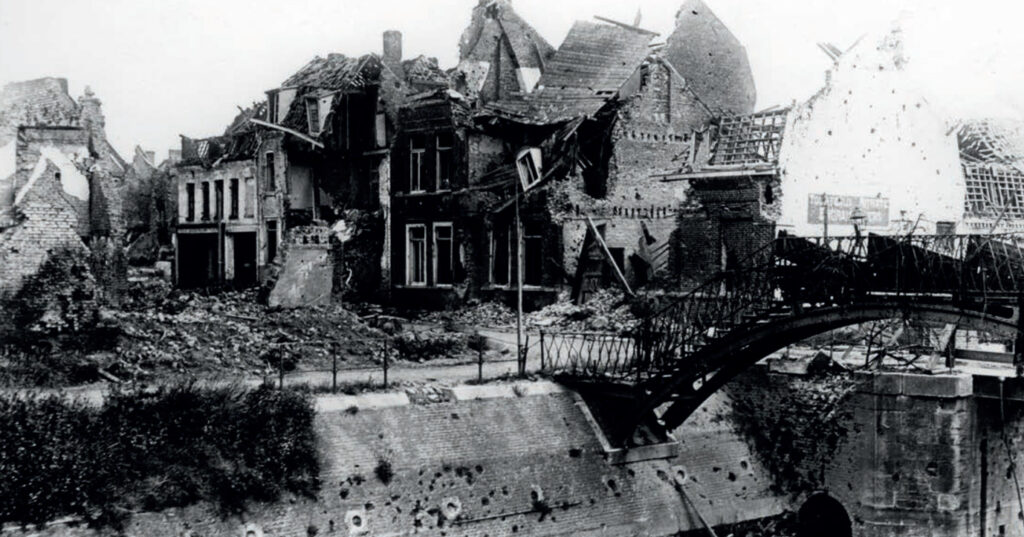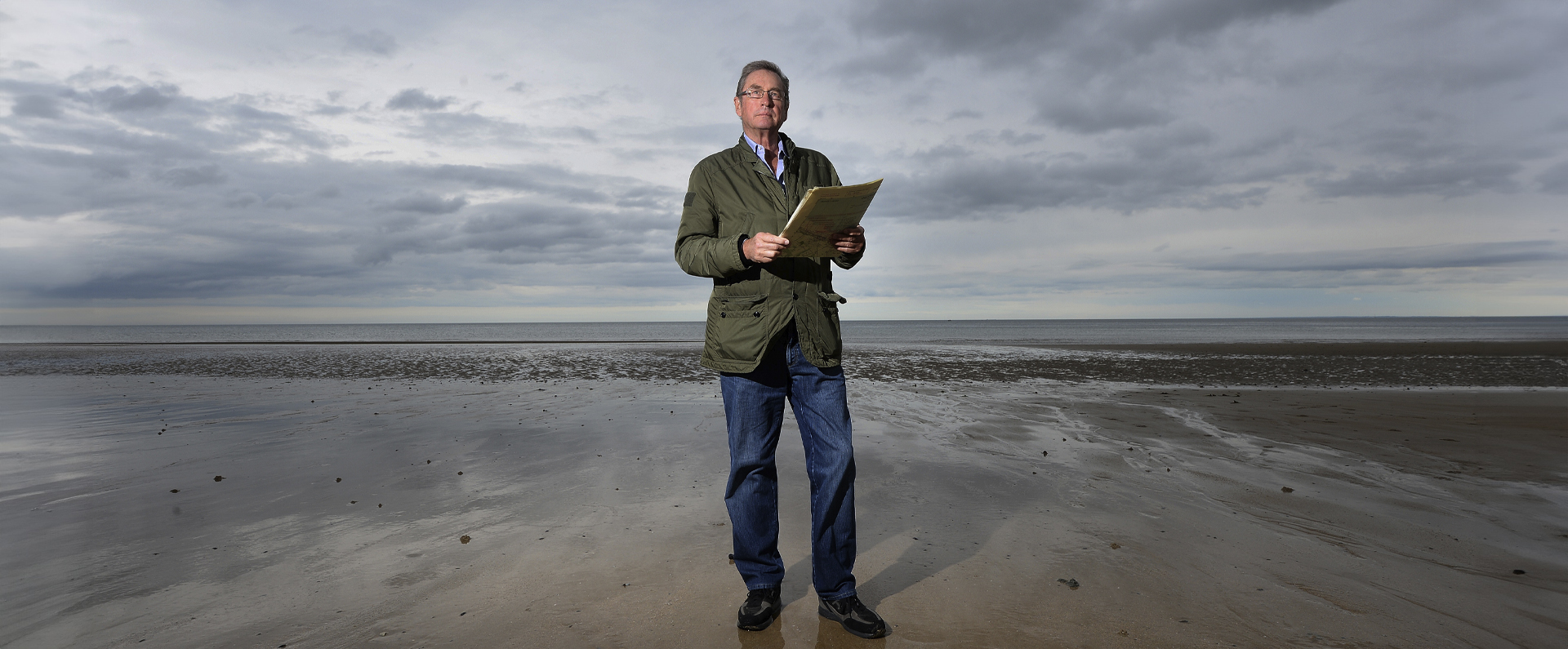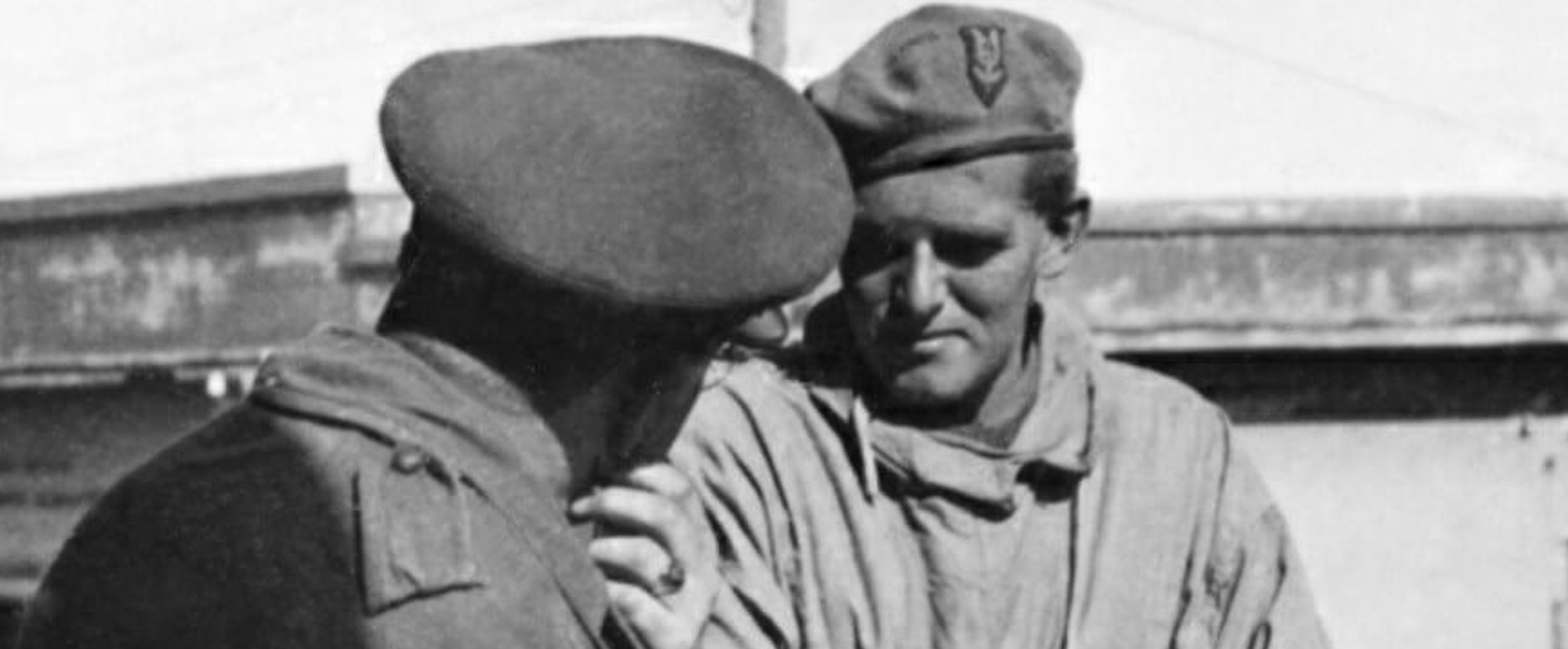
Published in Britain at War in July 2020.
Captain James Edgar Leach VC
Captain James Leach was awarded the Victoria Cross (VC) for an act of outstanding bravery during the early months of the Great War when he led his men by example. I feel privileged to be the custodian of his medal group having purchased it privately in 2008.
James Edgar Leach was born at Bowerham Barracks, Lancaster, Lancashire, on 27 July 1894. He was the son of Colour-Sergeant James Leach, who served in the The King’s Own (Royal Lancaster) Regiment, and his wife and Amelia (née Summerfield), a bookbinder.
James Leach Jnr, who had four brothers and a sister, was educated at Bowerham Council School in Lancaster and Moston Lane Municipal School, Manchester. His family had moved to Blackley, Manchester, in 1901 before moving again, this time to Leicester, in 1907. Leach worked as an apprentice chemist before enlisting into the 3rd (Special Reserve) Battalion, The Northamptonshire Regiment, in August 1910.
At the time that he enlisted, Leach stated that he was a fishmonger, added two years to his actual age and said his parents were dead (he gave no next of kin). In January 1911, Leach joined the 2nd Battalion, The Northamptonshire Regiment, and on 11 March of that year, he transferred to the 1st Battalion.
In November 1911, he was promoted to lance corporal and, in June 1914, he was promoted to corporal. At the outbreak of the First World War in August 1914, Leach and his battalion were based at Aldershot, Hampshire. On 13 August, his battalion was part of the 2nd Brigade of the 1st Division that landed in Le Havre, France. The following month his battalion took part in the fighting at the Battles of Aisne and, soon afterwards, Leach was promoted to sergeant and Mentioned in Despatches.
On 1 October, as a result of his sterling work on the battlefield and his leadership skills, he was commissioned in the field and transferred to the 2nd Battalion, The Manchester Regiment. On 23 October, he joined the battalion on the Western Front and, because it was short of officers, he was given command of A Company.
By late October 1914, the Allies in northern France and British II Corps had crossed the Béthune-La Bassée Canal and was fighting its way northwards. The Corps’ aim was to reach the Lille-La Bassée road supported by the French 10th Army. However, the Germans had ambitions of their own and to the south of Armentières they intended to break through the Allied line in what turned out to be the Battle of La Bassée. Although the Germans succeeded in pushing the line back, they failed in their ultimate aim of pushing through the line.
After two days of heavy fighting from 27 October, in which the Germans captured and then lost the village of Neuve Chapelle, there was further intense fighting on 29 October. That morning the Germans shelled the Manchesters near Festubert, west of La Bassée and during one prolonged assault, under the cover of a smokescreen, the enemy managed to enter the British trenches. This was despite a heroic defence from the Manchesters, who lost two officers in the fighting. Two attempts were made to recapture the lost trench but both failed.
At 2pm, Leach, aged twenty, and Sergeant John Hogan, aged thirty, mounted a third attempt to recapture the trench. Initially, they surprised the enemy and then they worked up the trench, skilfully going from one side to the other with fixed bayonets, until the trench was back in Allied hands. During close-quarter fighting, the twelve men killed eight of the enemy, wounded two and captured sixteen as Prisoners of War, according to their later citation.
Word soon spread of their bravery and VCs were announced for both Leach and Hogan on 22 December 1914, a surprise Christmas “gift” as both had simply expected to be Mentioned in Despatches.
Leach later explained in more detail to the Press what had happened on 29 October. That morning, he had been in an advanced trench capable of holding some thirty-five men. The advanced trench was about 150 yards ahead of the main trench and as close as 120 yards to the enemy. Leach estimated that his position had been attacked by some 250 enemy troops who made a “wailing” noise as they advanced. Although he thought the Manchesters had shot down some 150 of the enemy, the remaining 100 German soldiers seized the advanced trench, killing a dozen British soldiers in the process. Afterwards, the enemy made their way down the communication trench and eventually took over the main trench too.
Leach explained that, on learning that the 2nd Manchesters position was to be taken over the next day by the Gurkhas, he felt he should try to recapture the lost trench. The aim, as he and Logan advanced (initially supported by some volunteers), had been to try to push the enemy back and shoot them as they retreated. This worked and meant that they were also able to free some of the British PoWs who had been taken the previous day. Leach estimated that the tiny raiding party had captured fourteen enemy soldiers, along with twenty wounded and a German officer.
However, during his VC action Leach had become badly concussed and, on 25 November, he was evacuated to Britain for treatment at Lady Evelyn Mason’s Hospital for Officers in central London. He underwent Medical Boards on 3 and 27 December that both found him unfit for any service and so he went on leave. During his leave, he was promoted to lieutenant on 11 December, less than two weeks before his VC was announced. While in Manchester, Leach returned to Moston Lane, his former school, where he received a hero’s welcome.
Furthermore, on 13 February 1915, Leach took part in a recruiting drive in Manchester. He was presented with his award by George V in an investiture at Buckingham Palace on 13 February 1915, while Hogan, his comrade, received his decoration from the King exactly a week later.
After being declared fit for general service on 1 March, Leach also took part in the training of troops at Cleethorpes, Lincolnshire. On 15 April, he returned to his battalion in France, only to be concussed again days later and evacuated to Britain a second time, on this occasion on the St Andrew on 17 April.
After being treated at Taplow Priory in Buckinghamshire, Leach was again found unfit for any service and he was sent on leave until 20 June. On 21 June, a Medical Board found him fit for light duties and he was posted to 15th Royal Fusiliers, 7th Reserve Brigade, at Purfleet, Essex.
On 20 August, he was posted to No 1 Army School of Signalling, HQ first Army Central Force, Caius College, Cambridge. Here, he apparently met Gladys Digby: the couple married in Cambridge on 23 December 1915. Sadly, the marriage was short-lived because his bride died just months later. However, on 3 March 1917, Leach married a second time, on this occasion to Josephine Butt, the daughter of a Grimsby trawler owner, at Old Clee Parish Church, Cleethorpes. The couple went on to have two sons and a daughter.
On 1 January 1917, Leach was promoted to temporary captain and on 24 March he returned to France to resume his active service. The next day he went to 30th Infantry Base Depot and on 17 April he rejoined the 2nd Manchesters. After completing a two-week Lewis gun course ending on 2 July, he was medically examined and was again found unfit for active service. Three Medical Boards in Britain on 13 September, 16 October and 20 November again found him unfit and he was in hospital for much of this time, including spending time at Craiglockhart Hospital in Edinburgh, a military institution that specialised in treating nervous illness.
On 2 January 1918, a Medical Board found him permanently unfit for active service and he was placed on half pay from 9 February. The next month he took up the position of Adjutant, South-West London Cadet Battalion. Finally, after more than three years of poor health, and having apparently suffered from some kind of mental breakdown, a Medical Board on 24 July found him unfit for any further general service and he was discharged from the Army, after eight years’ service, on 7 August 1918. Because he had lied about his age from the start of his military career, Leach was still only twenty-four years old.
After the war, Leach did a large number of wide-ranging jobs. On 6 January 1921 and at a time of great tensions in Ireland, he joined the Royal Irish Constabulary, Auxiliary Division (the so-called “black and tans”), where he was stationed at Glengarrif, Co Cork. The following year he returned to England and was employed by his father-in-law as a clerk at Grimsby fish docks.
At the same time, he studied to become a Fellow of the Chartered Institute of Secretaries (FICS). From 1927, he worked at the Bank of England in London, only to lose his job because of redundancies during the Great Depression of 1930-1. He worked for some three years as a chartered secretary with an exporting business during which time he worked in the South Pacific while his family remained in Britain.
From 1934, Leach worked with Foster and Braithwaite, the stockbrokers, in the City of London. However, after the death of his wealthy father-in-law, Walter Butt, in 1936, he was able to give up work and study for the Bar. While training, he was cited as the correspondent in a divorce case and, having had an affair with the wife of company director, had costs of £500 awarded against him at Devon Assizes. In 1937, Leach’s own marriage ended at this time too and he was divorced in the following year at a time when such an event was rare and caused considerable embarrassment to the family. After the divorce, Leach worked as a chartered secretary and served as a councilor in Hammersmith, then Middlesex.
After the outbreak of the Second World War in 1939, Leach worked for the Ministry of Aircraft Production before switching in 1943 to a job at the Osram lighting factory in Hammersmith. From early December 1941, Leach served as a lieutenant in the 27th City of London (Roehampton) Battalion of the Home Guard, a role he performed for fifteen months. Leach married for a third time in 1944, this time to Mabel Folland. After the war, Leach worked for the Danish Bacon Company and was a Hammersmith councilor from 1949-55.
Leach died at his home in Shepherd’s Bush, west London, on 15 August 1958, aged 64, leaving a widow and, apparently, a total of six children from his second and third marriages. He was cremated at Mortlake Crematorium, East Sheen, west London, and his ashes were scattered at the venue’s Garden of Remembrance.
Download a PDF of the original Britain at War article
For more information, visit:
LordAshcroftOnBravery.com


